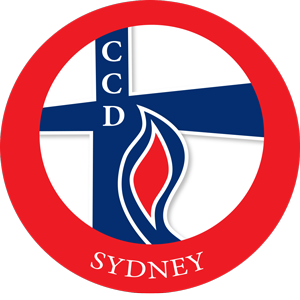CURRICULUM OVERVIEW
The Catholic Special Religious Education (SRE) curriculum series Christ our Light and Life is designed for use as the main resource to support parents/carers who choose Catholic SRE “Scripture” for their children attending public schools.
Additional/Special Needs: Catholic SRE “Scripture” teachers have access to training and support:
-
- to adapt the Christ our Light and Life SRE curriculum to the additional needs of students
- in consultation and collaboration with each student’s specialised school staff members
- For further information, click on the left-hand-side menu tab: “Curriculum Support for Additional/Special Needs”
The Christ our Light and Life series aims to provide an environment in which children and young people may:
-
- ‘fall in love’ with Jesus the Good Shepherd and develop a real relationship with him;
- discover personal union with God, through their membership of a Church established by God, and the mission for which God established the Church;
- learn how to become like their Saviour – in the home, in school, in the parish and in the world;
- have Christian virtue and Christian truth become the foundation for the whole of life.
The Christ our Light and Life series is informed by the following practical principles:
-
- Formation in faith is a life-long journey. Life itself is the context of any religious education program;
- The needs of students change over time. Therefore, a variety of teaching methods are required over time;
- The students’ lives influence their expressions of faith. Thus catechists’ teaching strategies will respond to and respect the cultural diversity of students and their families;
- The family is the basic community of the Church. Links between the home, parish and school are discovered and encouraged.
This curriculum series is for parents, priests, catechists and others involved with Special Religious Education. The series will be most effective in teaching contexts committed to the Gospel of Christ, to Sacred Tradition, and to the magisterium of Christ’s Church.
CURRICULUM REVIEW & REVISION PROCESS
& FOR MORE INFORMATION
& FOR MORE INFORMATION
The Christ our Light and Life curriculum series is purposely reprinted each year so that updates and revisions may be made.
A process of cyclic review is in place that is undertaken every five years.
Lesson content feedback and FOR MORE INFORMATION . . .
For more information or to provide feedback, please click HERE or use the ‘Contact Us’ tab at the top of this page.
Feedback and suggestions are collected, collated and consulted prior to the yearly re-printing cycle and, if approved, are accepted and printed as an update or are submitted to the more extensive cyclic review process.
Version control protocol
Whilst new books are printed for each new school year, Diocesan SRE Directors/Co-ordinators will be informed of revisions to advise their local-level Parish SRE Catechist Co-ordinators, e.g. so that students have the same version of the Student Activity Book or their SRE teacher is aware to make any minor changes if using up books ordered from a previous year.
FOUNDATIONAL CATECHETICAL GOALS
“The definitive aim of catechesis is to put people not only in touch, but also in communion and intimacy, with Jesus Christ, and by him to be led to the love of the Father in the Spirit and share in the life of the Holy Trinity.” – John Paul II, Catechesi Tradendae, 5
The Foundational Catechetical Goals are derived directly from the General Directory for Catechesis (GDC, 1997). They are the six fundamental tasks of catechesis which drive the whole program.
The purpose of catechesis is as follows:
- To create an initial conversion to or deepening awareness of Jesus Christ, moved by the Holy Spirit, through a primary proclamation of the Gospel [85]
- To create a deepening knowledge of Jesus Christ through Scripture and Tradition [85]
- To celebrate the salvific presence of Christ in the Sacraments, particularly the Eucharist [85]
- To challenge students to undertake a journey of interior transformation, taking the Decalogue and impressing on it the spirit of the Beatitudes, as Christ taught us in the Sermon on the Mount [85]
- To challenge students to permeate their lives with a spirit of prayer, so as to discover the mysterious action of God, who gives us strength in our weakness [85]
- To learn to cooperate actively in building up the Church and its work of evangelisation [86]
THE ROLE OF CATECHISTS
Catechists serve Jesus Christ as they pass on the Word in Scripture and Tradition to the young. Faithful to this Revelation, they are called to:
- Transmit the Gospel message and a maturity in faith – spiritual, liturgical, sacramental and apostolic;
- Provide clear doctrine, according to the teachings of the Catholic Church;
- Seek to understand revealed truths more deeply in their own lives so they can be a living witness to truth;
- Help the students make sense of their lives through Jesus Christ, who is the Revelation of God;
- Convey a sense of the nature of Christianity as a lived experience;
- Help students appreciate the relevance of the Sacraments in life’s journey towards eternal life;
- Convey a real sense of how Jesus wished his followers and all people to live their lives;
- Respect the relationship between God and the child;
- Be a servant of a message that is not their own, and, together with the child, humbly listen to God’s word;
- Treat students, right from the start, as persons known and loved by God, belonging to a community of believers;
- Foster each student’s positive self-esteem, well-being, competence and unique potential;
- Believe that all students have the capacity to learn and should be treated justly and equitably.
CATECHETICAL METHODOLOGY
“The communication of faith in catechesis is an event of grace, realised in the encounter of the word of God with the experience of the person.” (GDC #150)
Catechesis requires a meeting of the word of God with the experience of the person. God’s Word, as expressed in Scripture and Tradition, must touch a person’s life-experience for catechesis to occur. In this way a student integrates the Catholic faith with his or her personal experience.
There are then two beginning places for catechesis: the faith of the Catholic Church (faith) and human experience (life).
BEGINNING WITH FAITH: DEDUCTIVE METHOD
This method starts with the presentation of facts, and the application of those facts to personal life. These facts are derived from Scripture, Tradition, and the treasury of Church teaching. The truths of Christianity are drawn from these facts, absorbed by the mind, and integrated into personal life.
BEGINNING WITH HUMAN EXPERIENCE: INDUCTIVE METHOD
This method begins with life experience and enlightens that experience with the Word of God. This process reasons from the part to the whole – from subjective personal experience to objective universal truths, which, once understood, are reclaimed by the individual to enrich and educate that personal subjectivity.
Both catechetical methods are needed, and one method does not exclude the other. Just as revealed truths must be applied to life, life must be illumined with truth. Catechesis must unite faith with life. A number of activities are suggested, from which teachers select those which best suit their choice of inductive or deductive teaching.
FAMILY-CENTRED CURRICULUM
“The family, which has the primary duty of imparting education, needs the help of the whole community.” Pope Paul VI, (Gravissimum Educationis, 3 1965)
A key aim of the new curriculum series Christ our Light and Life is to promote the central place of parents and to support them in fulfilling their responsibilities for the faith formation and education of their children (cf. CCC, 2225-2226)
Families are the basic community of the Church. The parents of students in our schools and parishes are part of the whole Catholic community that has as an essential element of its mission the education in faith of its children. While it is not always possible for parents alone to educate their children in faith, they can, and should be an important part of the community that educates them.
The Christ our Light and Life series has included at the end of the Student Activity Book a series of eight ‘Extension Activities’ which families might use to supplement and continue the lessons learned at school. It is an acknowledgement of the role of parents as first educators of their children and the Confraternity of Christian Doctrine encourages and supports them in this role.
The family is the foundational unit of the Church, an integral part of the whole Catholic community.
Each family is called:
- to accept and live the Catholic Faith;
- to mature in faith and become an evangelising community;
- to love, nurture and serve each other;
- to participate in the development of society;
- to share in the life and mission of the Church.
As part of the whole Church, families are to be supported by the Confraternity of Christian Doctrine in the education in faith of their members.
The Christ our Light and Life series:
- strives to affirm and strengthen family life;
- acknowledges the many different situations of families today;
- encourages and models a commitment to faith.
CURRICULUM RESOURCES
THE STUDENT ACTIVITY BOOK
The Student Activity Book contains:
- 32 sequenced lesson worksheets;
- 8 Extension Activity Sheets. These pages are perforated, enabling them to be taken home at the end of each lesson. These pages contain information for the parents as well as activities for the students to complete;
- Treasury of Prayers;
- Values for Australian Schools.
The Student Activity Book has been prepared to accommodate either composite or non-composite classes. For example, Middle Primary (Stage 2) is aimed at years 3 and 4; that is, it is appropriate for children aged 8 – 10. In a composite class, the ‘a’ and ‘b’ text cycles are used in alternate years, so that students have a different book for each year and will thus cover the whole curriculum for the Middle Primary level. The same will occur with Junior Primary (Stage 1) and Senior Primary (Stage 3).’
THE TEACHER’S MANUAL
The Teacher’s Manual contains:
- Scope and Sequence document;
- Doctrinal Overview;
- 32 sequenced lesson plans;
- A Christmas Play;
- Glossary.
The Teacher’s Manual is a professional guide for helping catechists in their preparation and delivery of SRE lessons.
CCD WEBSITE
The CCD Sydney website has been developed to offer further assistance to catechists providing supplementary curriculum resources and relevant web-site links. Resources offered will include materials for the practical and professional learning of catechists. www.ccdsydney.catholic.edu.au
SACRED SCRIPTURE
An essential element of the Christ our Light and Life series is the reading of the Word of God in Scripture. Here we must revere the power and mystery of the Word of God. None of us can ever grasp the full meaning of a scriptural text, but by reading the Word of God reverently, slowly and reflectively, we bring the children into its mystery. At this age, most of them will not object or ask what every word means, but they will absorb in a deeply spiritual way the power of God’s Word. They will begin to learn how to breathe the “atmosphere” of the Scriptures. They will gain a sense of Scripture that we hope will develop and grow through all the years ahead of them in the catechetical journey.
When reading the Scriptures to the children from an officially authorised translation, the catechist may wish to add an explanation if the meaning is not clear to the students. Let us never lose sight of the power of God’s Word proclaimed in the community of faith under the guidance of the Holy Spirit!
Students need to become familiar with the story of God’s people through the telling and reading of Scripture, and have opportunities to reflect on the Scriptures in relation to their own lives.
The Sacred Scriptures are the living Word of God, read by believers through the eyes of faith. In interpreting the texts of Scripture, we are called to ‘be attentive to what the human authors truly wanted to affirm and to what they wanted to reveal to us by their words’ (cf. Dei Verbum 12).
THE PRAYER PLACE
The Prayer Place is an area of the classroom set aside to be used during Special Religious Education lessons. It contains all the materials and resources used in religious education. The area is re-created/re-decorated for each lesson, according to the theme. The students are taught to respect the Prayer Place and to care for it.
The Prayer Place can contain:
- the Bible;
- Models of objects used in the Church’s worship;
- Models of people and objects from the time of Christ;
- Booklets of parables and stories of Jesus;
- Icons, crucifix, colourful posters of Jesus’ life and stories;
- Pictures/posters relating to the theme of each lesson.
Catechists have a responsibility not only to teach their students about faith, but also to provide opportunities for them to experience a living faith through participation in prayer and liturgy. Since the law of prayer is the law of faith, the methods by which we pray and worship will affect and reflect the depth or otherwise of our understanding of God.
Prayer is:
- The raising of the mind and heart to God;
- Being open to a relationship with God;
- Our response to God’s invitation to this relationship of love and communion;
- Placing one’s life, as a whole person, before God, aware of one’s own needs and those of others and the world;
- Providing a diversity of experiences, which might include vocal, meditative, contemplative.
CONTENT STRANDS
GOD, THE HOLY TRINITY: The content strand God, the Holy Trinity enables students to become aware of the mystery of the one God as a Trinity of three distinct Persons – Father, Son and Holy Spirit: the Father as the first Person known to the Hebrews in Old Testament times; the second Person, Jesus Christ, true God and true man; and the Holy Spirit, the third Person sent by the Father and the Son at Pentecost. The relationship between these three Persons is explored and understood, as well as their attributed roles of Creator, Redeemer and Sanctifier.
CREATION: The content strand Creation enables students to appreciate the goodness and interconnectedness of all creation. All creatures reflect God in his perfections. The levels of creation are examined, distinguishing between matter and spirit, plants and animals, humans and angels. An in-depth study is made of the human person, created in the image and likeness of God. The human person is constituted of body and soul, with the spiritual powers of intelligence and free will. These spiritual powers are the crown of human dignity, and bring with them moral responsibility. Part of human responsibility is to care for and nurture God’s good creation. Finally, the ‘Last Things’ are explored, with an emphasis on how creation will find its consummation in Christ, and how the human person is destined to everlasting life in God’s heavenly Kingdom.
THE CHURCH: The content strand The Church enables students to appreciate the mystery of Christ’s ‘Mystical Body’, and its mission to continue Christ’s work of teaching, governing and sanctifying. Aspects of the Church examined include the Magisterium, or teaching Church, the role of Sacred Scripture and Tradition, the Liturgy, the Sacraments, the works of the Church, discipleship and mission, the Church in heaven (Mary and the Saints) and the Church suffering (Purgatory). The Church is the People of God, the Body of Christ, comprising clergy, religious and laity. Students are invited to a deeper appreciation and participation in the life and mission of the Church.
THE LITURGY AND THE LITURGICAL YEAR: The content strand The Liturgy and the Liturgical Year aims to give students an understanding of the nature of the Liturgy, its importance and centrality in Christian public worship. Within this, emphasis is given to provide a deeper appreciation of the Eucharist and the Divine Office, inviting students to a greater level of active and fruitful participation. The sacraments are presented as visible channels of grace, established by Christ to impart his life to us. Exploration is also made of the Liturgical Year and how it presents the great events of the Christian message to the People of God, especially Advent/Christmas, Lent/Holy Week and Easter/Pentecost, as well as commemorating the lives of inspirational men and women recognised as Saints by the Church.
THE MORAL LIFE: The content strand The Moral Life presents the moral law as taught by Christ in the Sermon on the Mount. The Commandments and Beatitudes are presented as the law of love and perfection, binding on all. This life cannot be practised without grace, which is obtained ordinarily through prayer and the sacraments. Students are introduced to different forms of prayer, and invited to incorporate prayer into their lives. Students are also invited to discern their vocations through prayer and counsel. Finally, issues of moral importance are discussed, presenting the Church’s teaching on such topics as the family, chastity, respect for life, respect for property, respect for truth and for the good name of others.



